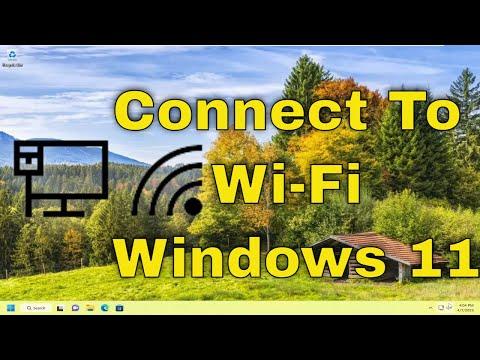Connecting to Wi-Fi in Windows 11 is a straightforward process, but it’s important to understand the steps involved to ensure a seamless connection. In this tutorial, I’ll walk you through the entire process, from accessing network settings to troubleshooting common issues.
First, ensure that your device has a working Wi-Fi adapter. Most modern laptops and desktops come with built-in Wi-Fi capabilities, but if you’re using a desktop computer, you might need to plug in a USB Wi-Fi adapter. Once you’ve confirmed that your Wi-Fi adapter is functioning, you’re ready to start the connection process.
Begin by turning on your computer and logging into your Windows 11 account. The first step to connect to a Wi-Fi network is to access the network settings. To do this, click on the network icon located on the right side of the taskbar. This icon typically looks like a series of ascending bars or a computer screen with a signal wave, depending on whether you are connected to a network or not.
When you click on the network icon, a menu will pop up displaying available networks. If your Wi-Fi is turned off, you will see a message indicating that Wi-Fi is off, and there will be an option to turn it on. Click on this option to enable Wi-Fi. The menu will then refresh to display a list of available networks.
Find the Wi-Fi network you wish to connect to from the list. If you do not see your desired network, it may be out of range or there may be an issue with the network adapter. Make sure you’re within range and try again. Click on the network name to select it.
Once you select the network, you will be prompted to enter the Wi-Fi password. This is a security measure to ensure that only authorized users can connect to the network. Type in the password carefully, making sure that Caps Lock is not turned on unless the password is case-sensitive. After entering the password, click on the “Connect” button.
Windows 11 will then attempt to establish a connection to the network. If the password is correct and the network is available, you will be connected within a few moments. Once connected, you will see a confirmation message, and the network icon in the taskbar will change to show that you are connected. You can now start using the internet.
If you encounter any issues during this process, there are a few troubleshooting steps you can take. First, check if other devices can connect to the same network. If they can, the issue might be specific to your computer. Restarting your computer can often resolve temporary connectivity issues. Additionally, you can try forgetting the network and reconnecting. To do this, go to Settings, select “Network & Internet,” and then click on “Wi-Fi.” Find the network you’re having trouble with, click on it, and select “Forget.” Afterward, try connecting to the network again.
Another potential issue could be with your Wi-Fi adapter or driver. To check if your Wi-Fi adapter is functioning correctly, go to Device Manager by right-clicking on the Start button and selecting “Device Manager.” In Device Manager, find “Network adapters” and expand the section. Look for your Wi-Fi adapter, which might be listed as “Wi-Fi,” “Wireless,” or a similar term. If you see a yellow exclamation mark next to it, there may be a problem with the driver. Right-click on the adapter and select “Update driver” to see if there are any available updates.
Sometimes, network issues are due to problems with the router. Make sure your router is powered on and that all cables are securely connected. Restarting the router can also help resolve connectivity issues. Unplug the router, wait for about 30 seconds, and then plug it back in. Wait a few minutes for the router to fully restart and then try connecting to the Wi-Fi network again.
In addition, ensure that your Windows 11 operating system is up to date. Microsoft frequently releases updates that include fixes for various issues, including connectivity problems. To check for updates, go to Settings, select “Update & Security,” and then click on “Check for updates.” Install any available updates and restart your computer if necessary.
Finally, if you are still having trouble connecting to Wi-Fi, you might want to consider contacting your internet service provider (ISP) for further assistance. They can help determine if there is an issue with your network or provide additional troubleshooting steps specific to your situation.
In summary, connecting to Wi-Fi in Windows 11 involves accessing the network settings through the taskbar, selecting the desired network, entering the correct password, and troubleshooting any issues that arise. By following these steps, you should be able to establish a stable Wi-Fi connection and enjoy uninterrupted internet access. Whether you’re working from home, streaming content, or browsing the web, a reliable Wi-Fi connection is essential for a smooth and efficient online experience.
